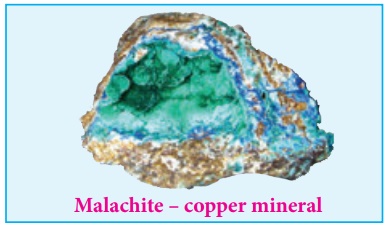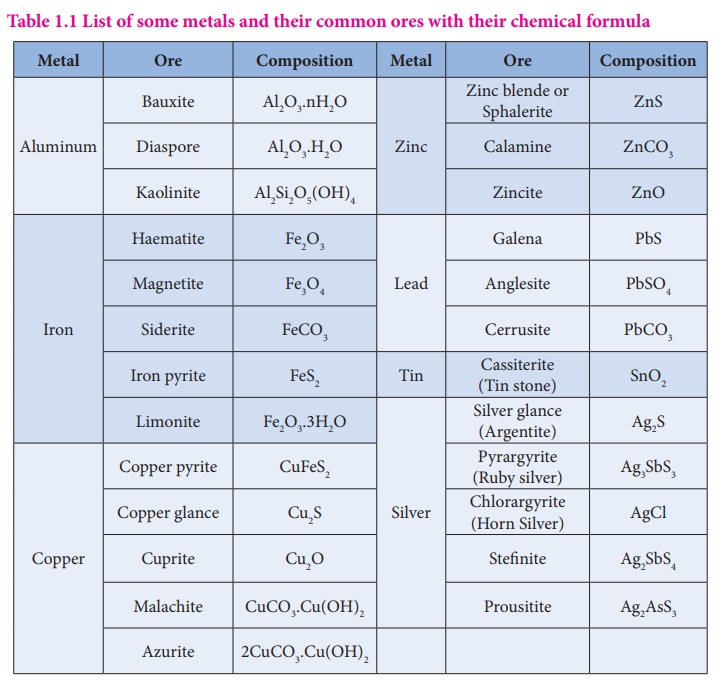Metallurgy | Chemistry - Occurrence of metals | 12th Chemistry : UNIT 1 : Metallurgy
Chapter: 12th Chemistry : UNIT 1 : Metallurgy
Occurrence of metals
Occurrence
of metals
In general, pure metals
are shiny and malleable, however, most of them are found in nature as compounds
with different properties. Metals having least chemical reactivity such as
copper, silver, gold and platinum occur in significant amounts as native
elements. Reactive metals such as alkali metals usually occurs in their
combined state and are extracted using suitable metallurgical process.
Mineral and ore
A naturally occurring
substance obtained by mining which contains the metal in free state or in the
form of compounds like oxides, sulphides etc... is called a mineral. In
most of the minerals, the metal of interest is present only in small amounts
and some of them contains a reasonable percentage of metal. For example iron is
present in around 800 minerals. However, some of them such as hematite
magnetite etc., containing high percentage of iron are commonly used for the
extraction of iron. Such minerals that contains a high percentage of metal,
from which it can be extracted conveniently and economically are called ores.
Hence all ores are minerals but all minerals are not ores. Let us consider
another example, bauxite and china clay (Al2O3.SiO2.2H2O).
Both are minerals of aluminium. However, aluminium can be commercially
extracted from bauxite while extraction from china clay is not a profitable
one. Hence the mineral, bauxite is an ore of aluminium while china clay is not.
The extraction of a metal of interest from its ore consists of the following metallurgical processes.
(i) concentration of the ore
(ii) extraction of crude metal
(ii) refining
of crude metal

Table 1.1 List of some metals and their common ores with their chemical formula

Related Topics